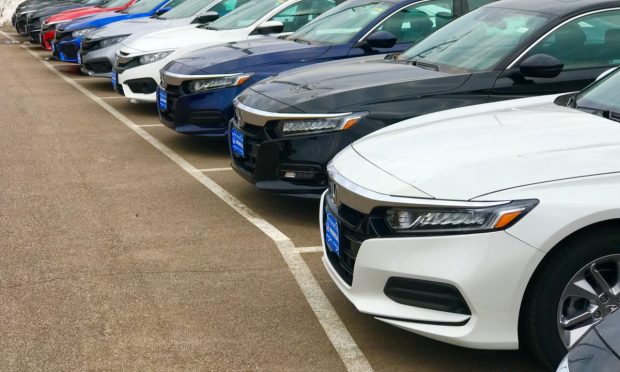New Vehicle Sales Declines Go Beyond Inventory, Chip Shortage

The latest data from the car industry might point to some troubling signs for the U.S. consumer’s propensity to spend.
Major automakers across the globe have been reporting their March auto sales results. Taken as a group, the major manufacturers saw double-digit declines in new vehicle sales. General Motors said last week that unit sales were down 20% for the quarter that ended March 31; Honda was off 23%. Toyota seemed to be the “best” performer in the group, with sales down 15%.
The headlines trumpet the fact that chip shortages and supply chain disruptions continue to act as headwinds to new vehicle sales (the Russia-Ukraine war is also hitting supply chains). And in general, as Reuters noted, the automakers look for demand to be strong in the months ahead, buoyed in part by the strong labor market.
But there are some signals at quarter’s end that hint at a bit of turbulence in that demand. Yes, it’s a truism that the lack of available inventory means that unit sales would fall year over year. Simply put, being able to build fewer cars means fewer cars wind up on the proverbial lots.
The constraints are such that the annual run rate of new vehicle sales stands at a bit more than 13 million; last year, that tally stood at just over 15 million, up slightly more than 3% from 2020’s levels.
Used Car Inflation
The lack of inventory has been driving up used car prices too — chiefly because the supply is available to only partially satisfy demand.
To that end, it may not be all that surprising to see that in recent months there has been spate of fundraising and expansions of eCommerce platforms geared toward bringing dealers and buyers and sellers together. Consider, for example, that eCommerce platform Shift disclosed an acquisition that will accelerate its ability to build a digital marketplace that will enable dealers and independent sellers to list their used cars alongside Shift’s owned inventory.
Read more: Used Car eCommerce Platform Plans Marketplace to List Others’ Cars Too
But beyond the shortages, as to what’s on tap, March was the first month in which we’ve seen the full-fledged impact of Russia’s invasion of Ukraine. Inflation has been an offshoot of the geopolitical turmoil. And inflation has been well-entrenched in vehicle sales. As the latest consumer pricing data by the U.S. Department of Labor show, prices paid on new vehicles gained 12%, used vehicles were up a staggering 41%.
At some point — possibly soon — the pressures of inflation will offer up a drag, so much so that the unit sales declines will be, for lack of a better word, organic. We may not see anything on the order of the 2020 vehicle sales recession, where job losses and a health crisis sent unit sales down in the mid-teens percentage points.
The road that stretches ahead for new vehicle sales is a bumpy one.
